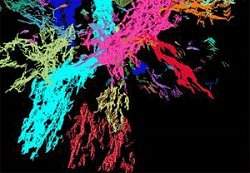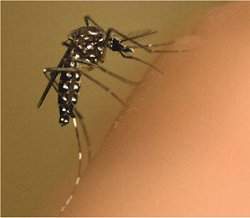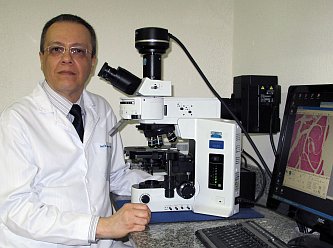 |
| Projeto de pesquisa conjunta entre cientistas da USP e do MIT busca na engenharia de tecidos uma solução para a recuperação de doenças isquêmicas. |
Todos contra o infarto
Um infarto do miocárdio pode acarretar ao paciente um dano tão grande que o restabelecimento do fluxo sanguíneo por meio de técnicas convencionais talvez não seja suficiente.
Para reparar tal estrago, seria necessário criar novos vasos ou até mesmo substituir o tecido danificado.
Esse é o desafio que José Eduardo Krieger e sua equipe da Faculdade de Medicina da Universidade de São Paulo (FMUSP), enfrentarão ao lado de um grupo do Instituto de Tecnologia de Massachusetts (MIT), nos Estados Unidos.
Fruto de um intercâmbio entre as duas universidades, a ideia do intercâmbio é desenvolver alternativas para inibir, ou ao menos retardar, a deterioração das células do tecido cardíaco após o infarto do miocárdio.
"O tratamento evitaria novos infartos e reduziria o tempo de recuperação do paciente", disse Krieger.
Tratamentos para o infarto
Hoje, ao sofrer um infarto do miocárdio, uma pessoa pode ser submetida a três tipos de tratamentos.
Dependendo do quadro clínico, o médico pode optar pelo uso de medicamentos ou pela hemodinâmica, na qual é inserido um balão ou stent na artéria por meio de um cateter.
Outro procedimento é a vascularização cirúrgica ou, em alguns casos, o especialista pode recorrer à combinação dos tratamentos.
Engenharia de tecidos
"A nova técnica utiliza o conceito de engenharia de tecidos para combinar células e uma matriz biopolimérica para prevenir a morte das células próximas ao infarto e ao mesmo tempo estimular a formação de novos vasos", explicou Krieger.
"As células injetadas com os biopolímeros têm maior chance de permanecer no local, como se estivéssemos utilizando uma cola. Além disso, os biopolímeros agem como potentes biorregulatórios e secretam fatores que poderão contribuir para o processo de reparação do tecido danificado", completou o professor Elazer Edelman, do Centro de Engenharia Biomédica do MIT-Harvard, parceiro no projeto.
O grupo está desenvolvendo uma mistura gelatinosa que permite reter as células no local desejado, dentro do miocárdio ou em seu entorno, além de estimular fatores de crescimento nas células residentes.
Biopolímeros
Em linhas gerais, esses biopolímeros funcionam como uma espécie de cola. "Os benefícios dessa técnica seriam uma recuperação mais rápida da pessoa que sofreu o infarto e o restabelecimento da função do miocárdio", disse Krieger.
Com esses plásticos biológicos, feitos a partir de fibrina ou colágeno (retirados do próprio paciente) ou materiais sintéticos, os pesquisadores dos Estados Unidos e do Brasil esperam estimular a formação de novos vasos e, ao mesmo tempo, reduzir o processo da fibrose.
"O mecanismo ainda não foi totalmente elucidado. Precisa ser mais investigado. Mas podemos adiantar que a melhora associada à fibrose e a preservação da forma e tamanho do ventrículo permitem especular que há influência da sinalização parácrina nesse processo", afirmou Edelman.
A sinalização parácrina é um tipo de sinalização que tem como alvo apenas as células que estão na vizinhança da célula emissora do sinal.
Modelos animais
No laboratório do MIT, os cientistas estão priorizando experimentos com células humanas. No InCor, os testes são realizados com células de suínos.
O grupo de Krieger observou que, ao serem injetadas no coração, as células mesenquimais (importantes na formação de novas células) derivadas do tecido adiposo do porco são capazes de prevenir a deterioração das células no modelo de isquemia cardíaca - isso em ratos.
Agora, a equipe brasileira está testando a mesma hipótese no modelo suíno, considerado o mais próximo do humano. Krieger destaca que tanto o uso de biopolímeros como a terapia celular não são mais invasivos do que os tratamentos convencionais.
"Durante a recuperação, se o paciente possui uma massa de tecido cardíaco muito grande, ele pode progredir para um quadro de insuficiência cardíaca. E é isso que desejamos inibir ou, pelo menos, retardar", afirmou.







